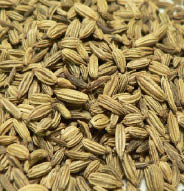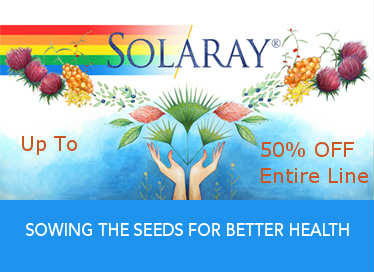|
Search Term: " Shores "
Bitter Orange Extract
Date:
November 22, 2012 10:46 AM
History Indigenous to the Meditteranean region today, but brought to their Shores by Arab tradesmen in 1200 , bitter orange or citrus aurantium was highly popular among herbalists all over the southern parts of Europe is mainly France, Greece, Spain and Italy. A botanical species commonly termed as seville orange and bigarade orange, this bitter citrus fruit is known for its oil extract, flavoring and use in the perfume industry. However , the ancient Chinese used it for treating dyspepsia , abdominal distention and diarrhea. These uses also drew from its roots in ancient Greek experiments in aromatherapy, phyto-therapy and cosmetology. Its arrival in America can be credited to the Spaniards and the Portuguese who for very long had been using the fruit for its medical component. Bitter orange trees grew in abundance in the states of Florida, Louisiana and California way back in the middle of the nineteenth century.There have been numerous pharmacological indicators in the study of C aurantium actions and it has been termed as an anti spasmodic, anti fungal , anti bacterial, anti-inflammatory, sedative, tranquilizer and also a vascular stimulant. Studies, Benefits Recent studies about its effect on cancer cells is underway. A Closer Look At Its Health Benefits Bitter orange peel, flower and seed are known to have varying effects on the human body and its studies date back centuries. Quite simply it has the ability to squeeze blood vessels, affect the heart rate and also change the level of metabolism. A closer look at its components would help focus on their particular impact on health.
It results in faster metabolism, increase in heart rate by affecting the adrenaline system, and in turn aid in weight loss. What needs to be seen is whether this metabolism booster is in any way a retardant with any other medication that you may be taking. Many have reverted to bitter orange extracts to tackle their weight problem after the ban on ephedra by the US drug administration . what is needed is prudence as most consider bitter orange as a health supplement forgetting its rather potent effect on the body .
(https://vitanetonline.com:443/forums/Index.cfm?CFApp=1&Message_ID=2731) Fennel Seeds
Date:
November 12, 2009 04:47 PM
The fennel plant is native to the southern areas of Europe and Asia Minor. The herb is now cultivated in the United States and Great Britain. It was used anciently in many civilizations. Used in ancient Egypt, this herb aids in digestion and flatulence. In Italy, fennel was used to bring surgical patients out of anesthesia. Fennel was recommended by Hippocrates and Dioscorides to increase milk production in nursing mothers. The ancient Greeks used this herb for weight reduction, while the seventeenth-century herbalist Nicholas Culpeper also recommended this herb for losing weight. Fennel is extremely helpful in weight reduction, as it suppresses the appetite. This herb aids in stabilizing the nervous system and can be used as a sedative for small children. Fennel can be used to expel phlegm from the throat, eliminate toxins from the body, and purify the blood. This herb is known for its ability to fortify the immune system and be good for the eyes. Additionally, fennel aids in digestion, improves night vision, relieves gas, expels worms, improves the quality of milk in nursing mothers, and cleans the bladder and liver. This herb has been used to stimulate menstruation and can help too soothe the smooth muscles of the digestive tract, as it aids in digestion and related problems.
Research on rats has found that the fennel seeds have estrogenic effects on the genital organs. The herb has been found to promote the production of milk in nursing mothers. Fennel is good for digestion, colic, and other stomach complaints. This herb contains essential oils that have a composition similar to catnip and peppermint. Additionally, this herb can be very helpful in treating excessive appetite, asthma, constipation, convulsions, coughs, uterine cramps, gout, kidney ailments, absence of lactation, liver disorders, lung disorders, and nervous disorders. For more information on the many beneficial effects provided by this herb, please feel free to contact a representative from your local health food store.
(https://vitanetonline.com:443/forums/Index.cfm?CFApp=1&Message_ID=2112) What the Medicine Men Knew
Date:
June 12, 2005 02:17 PM
What the Medicine Men Knew by Phyllis D. Light, RH, AHG Energy Times, August 4, 2003 When Europeans first landed on the Shores of North America, they were greeted by Native Americans who were healthy and strong, tall and straight-boned, and who generally lived to a ripe old age. Curious and friendly, the Native Americans showed the newcomers how to harvest wild foods and grow suitable crops, and also demonstrated the medicinal use of herbs. The North American indigenous medical traditions evolved into an effective system during its long history, estimated at between 12,000 and 40,000 years. So, herbally, we owe a huge debt to the Native American willingness to share knowledge of North American plants. Many of the herbs sitting on the shelves of natural food stores today were originally found in the medicinal arsenal of Native Americans, including black cohosh, echinacea, goldenseal, pleurisy root, sarsaparilla, red root, black walnut, gravel root and American ginseng. Unique Healing Traditions The number of Native tribes in the United States is estimated at about 500, and each possesses a unique set of healing traditions. While the term "Native American medicine" does not describe a homogenous system of healing, common, underlying principles can be discerned in many of these tribal traditions. Most often, these healing traditions and practices have been handed down in a rich oral tradition from practitioner to practitioner, rarely finding their way into written descriptions. For instance, according to David Winston, a Cherokee medicine priest and herbalist living in New Jersey, "Cherokee medicine is based on connection-body, mind, spirit, family, community and God/Spirit. The Cherokee word for medicine, Nvowti, means 'power.' Anything that has power-water, ceremony, songs, stories, herbs-is medicine." On the other hand, Charles Alexander Eastman, PhD (Indian name: Ohiyesa), comments in his book, The Soul of an Indian, "The Sioux word for the healing art is wah-pee-yah, which literally means 'readjusting or making anew.' Pay-jee-hoo-tah, literally 'root,' means medicine, and wakan signifies 'spirit' or 'mystery.' Thus the three ideas, while sometimes associated, were carefully distinguished." Customized Treatment Native American healing philosophy advocates a customized treatment plan for each person's unique health problems. Consequently, healing techniques focus on the individual, not the disease, although the overall treatment may incorporate well-known ways for relieving the specific discomforts, aches and pains associated with an illness. Native healers employ herbs, ceremony, song and prayer in a manner tailored to each person they treat. Medicinal Sweat A central tenet in many Native American healing traditions is the need to sweat. As a result, Inipi, or Lakota sweat lodges, are located in most areas of the country. Sweating produces many benefits. It opens pores, cleanses the skin, enhances circulation, discourages the growth of bacteria in the body and functions as a detoxification outlet. The skin is well-suited for the elimination of toxins: Experts estimate that during everyday functioning, 30% of the body's wastes pass through the skin. For the Native American, the sweat lodge offers spiritual help as well as physical aid. And the use of sweating is generally not employed as the only treatment but is always accompanied by other therapies such as herbs. Native Americans are not alone in their reverence for using sweating to treat disease. A technique for sweating is fundamental to most traditional medicines, including Ayurveda and Traditional Chinese Medicine. Native American Herbs For native healers, herbs offer physical, emotional and spiritual support. In this tradition, herbs are consumed in teas, tablets or capsules, or are inhaled after being thrown onto the hot stones in a sweat lodge or otherwise burned to release their vapor. Smudging, a ritualized method for bathing a person or object with the smoke from sacred herbs such as sweet grass, sage or cedar, is a way of cleansing individuals, clearing a ritual space or sanctifying ceremonial tools. Each herb in the smudging process is used for a specific reason. Sweet grass grows the spirit, while sage and cedar dispel negativity. Frequently, herbs are taken as preparation for participation in rituals. "Sweet leaf is used as a tea before the sweat lodge ceremony in some Indian communities in South Dakota," notes Matthew Wood, RH, AHG, author of The Book of Herbal Wisdom (North Atlantic Books). "It promotes perspiration, relaxes the nerves, reduces tension and brings harmony and beauty to the participants." Connections The idea that everything in the universe, including people, is connected is a philosophy shared by many tribes. When a medicine person assesses an illness, she not only observes physical problems but also analyzes family and community dynamics. A person's relationship with God is believed to influence health. In this vein, prayers like Mitakuye Oyasin, a Lakota blessing that means "all my relations," appeals to the interconnectedness of each of us with other people, with the Earth, and with God. "Separation and isolation is one of the leading causes of illness," David Winston says. "There is a connection between everything-within ourselves and outside of ourselves. When we isolate and separate ourselves from our family, our community and from God/Spirit, then we suffer diseases of the spirit. Ultimately, we are responsible for our own spirits-to keep them healthy. "In addition," adds Winston, "from the Cherokee viewpoint, the nuclear family is seen as too small. There are too many single parents working too hard and under too much stress." In a Native American clan-based society, much of this stress is defused with the support of an extended family. Kinship philosophy is a basic part of the Native perspective, a kinship that extends beyond humans to all life, including animals, fish, and birds as well as the Earth itself. Consequently, care of the Earth is an integral part of kinship philosophy. Indigenous cultures have very specific knowledge of ecology and environmental ethics. In the kinship philosophy, damage done by man to the Earth is then reflected back in the body of man by diseases of the body and spirit. Man and his illnesses are seen as part of the ecology of the planet, not a separate, isolated force with the power to control. Modern Ills, Ancient Treatments Winston believes that Cherokee medicine offers the greatest aid to people with chronic illnesses such as chronic fatigue, fibromyalgia and some female reproductive complaints, as well as individuals with stress-related disorders. It can also offer aid to those who are depressed and feel alienated or disconnected from society. Native American medicine can offer balance and healing. It can be used in conjunction with Western medicine, providing a holistic and individualized treatments. To find a Native American healer, check with your local tribal community. Mitakuye Oyasin.
(https://vitanetonline.com:443/forums/Index.cfm?CFApp=1&Message_ID=307) | ||||||||||||||||||||||||

 Fennel is a plant species that is part of the genus Foeniculum. A member of the family Apiaceae, this plant is a hardy, perennial, umbelliferous herb. The plant has yellow flowers and feathery leaves. It is generally found growing on the Shores of the Mediterranean, but it has become widely naturalized elsewhere. Now, the plant can be found growing wild in many parts of the world, especially on dry soils near the sea-coast and on river-banks. The plant is highly aromatic and flavorful. It is actually one of the primary ingredients of absinthe. Some species of fennel possess a swollen, bulb-like stem base, which is used as a vegetable. Fennel is used as food plant by some moth and bird species.
Fennel is a plant species that is part of the genus Foeniculum. A member of the family Apiaceae, this plant is a hardy, perennial, umbelliferous herb. The plant has yellow flowers and feathery leaves. It is generally found growing on the Shores of the Mediterranean, but it has become widely naturalized elsewhere. Now, the plant can be found growing wild in many parts of the world, especially on dry soils near the sea-coast and on river-banks. The plant is highly aromatic and flavorful. It is actually one of the primary ingredients of absinthe. Some species of fennel possess a swollen, bulb-like stem base, which is used as a vegetable. Fennel is used as food plant by some moth and bird species.  The seeds of the fennel plant are used to provide anorectic, antacid, anti-inflaamtory, antimicrobial, antispasmodic, carminative, diuretic, estrogenic, expectorant, galactagogue, sedative, and stimulant properties. The primary nutrients found in this herb are calcium, magnesium, niacin, potassium, sodium, sulfur, vitamins A, C, B1, and B2. Primarily, fennel is extremely beneficial in dealing with abdominal cramps, colic, gas, gastric disorders, indigestion, intestinal problems, and weight-related conditions.
The seeds of the fennel plant are used to provide anorectic, antacid, anti-inflaamtory, antimicrobial, antispasmodic, carminative, diuretic, estrogenic, expectorant, galactagogue, sedative, and stimulant properties. The primary nutrients found in this herb are calcium, magnesium, niacin, potassium, sodium, sulfur, vitamins A, C, B1, and B2. Primarily, fennel is extremely beneficial in dealing with abdominal cramps, colic, gas, gastric disorders, indigestion, intestinal problems, and weight-related conditions. 



